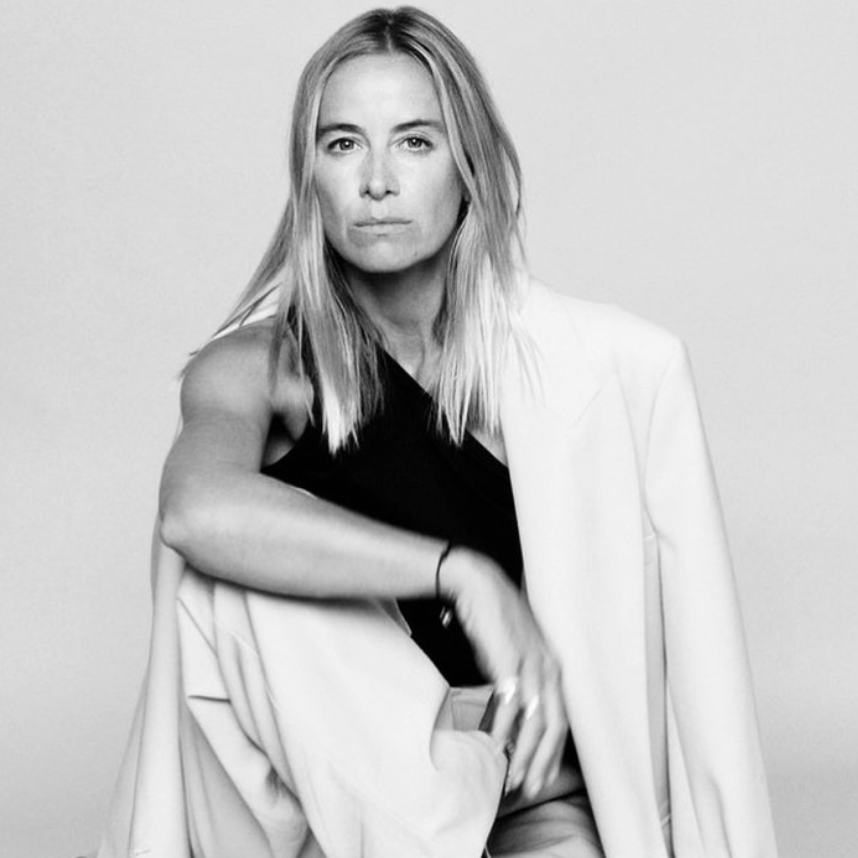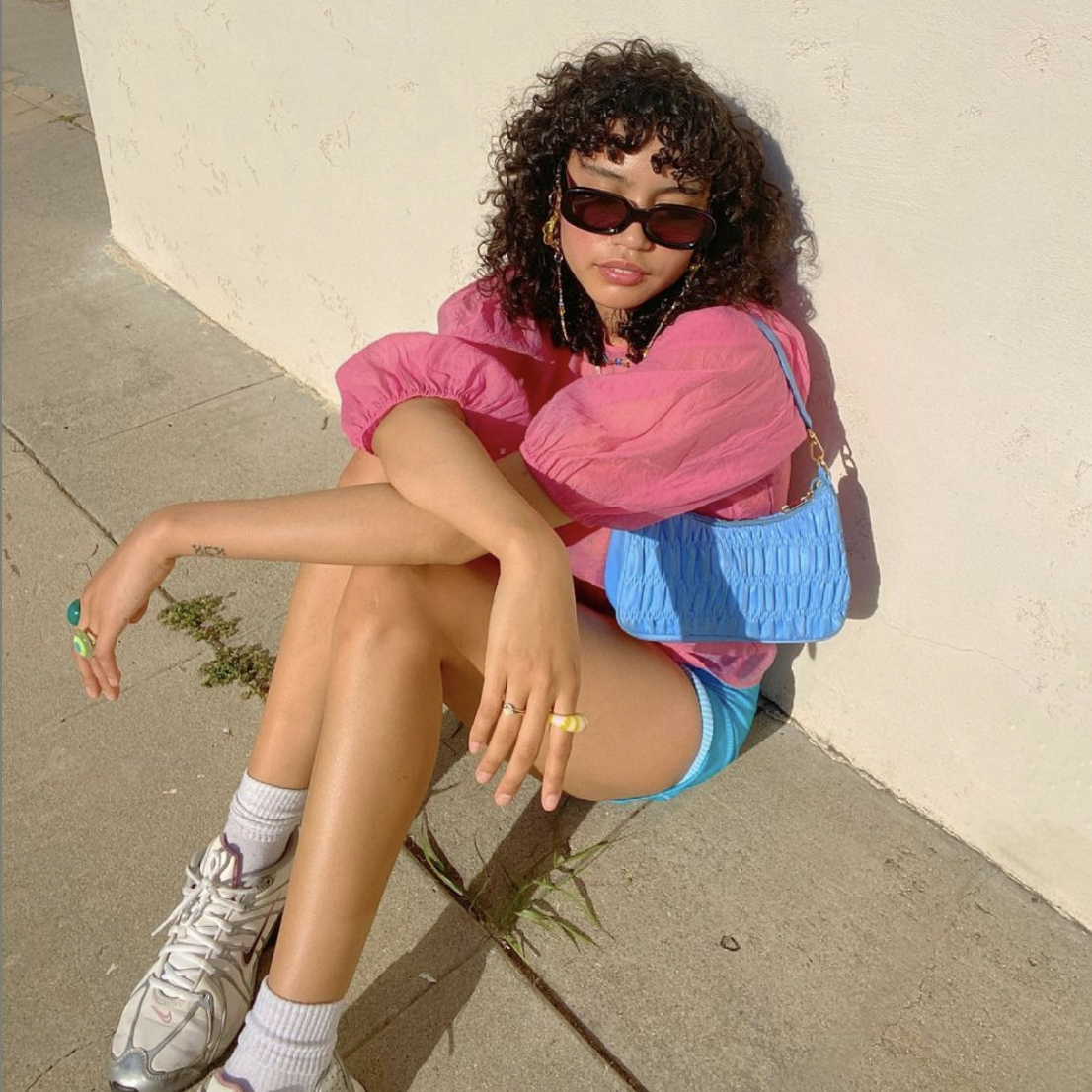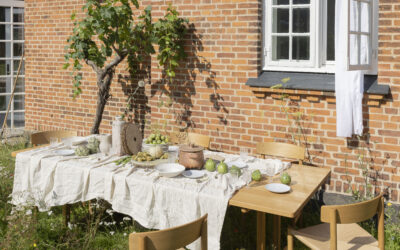Sustainable Lifestyle: green is the new black
International markets value and perceive the importance of lifestyle brands being sustainable, ethical, and transparent differently. Scandinavia in particular is well-known and praised for standing at the forefront of sustainable development. Ranging from fashion weeks in Copenhagen and Stockholm aiming to be fully sustainable, to fashion brands having high sustainable standards, it is now challenging to find a Scandinavian fashion brand that does not use sustainable materials or openly shares its production processes.
Two models which work exceptionally well for fashion and lifestyle brands are circular and slow. We have gathered exclusive insights from 3 Scandinavian-based sustainable fashion brands to find out more about these models and how to implement them.
Circular fashion
There are multiple ways in which brands can now engage in a circular fashion, the most common way that sustainable brands use is to facilitate the recycling opportunities of a product. It is essential that brands guide consumers on how to recycle their products by the end of use. It is also worth noting, that circular fashion is not only about the use of sustainable and re-purposed materials, but also includes pre-owned selling and buying which has been rising in popularity.
Vintage fashion is no longer described as outdated, but has become sought after and recently expanded 21 times faster than conventional apparel model commerce since 2019. Pre-owned fashion brings fashion one step closer to being circular and is the most obvious way of extending the lifetime of a product.
The concept of circular fashion is fast-growing and is gaining much attention among sustainable fashion brands, as the fashion industry is facing pressure from a new generation of consumers who demand more sustainable options within fashion. In fact, the potential value of fashion’s circular economy is said to be at $5 trillion. Making circular fashion processes an attractive and promising alternative to fashion’s linear production model.
VOCAST spoke to two entrepreneurs who both founded circular fashion brands so you can learn more about what it means in the Scandinavian market:
Industry insight: The Vintage Bar & reWear it
 Marie Louise Schultz | Founder at The Vintage Bar
Marie Louise Schultz | Founder at The Vintage Bar
At the end of 2017, Marie Louise Schultz started The Vintage Bar with a clear mission, she wanted to inspire people and make them inspire others by showing that secondhand can be as cool as new: “I hope to inspire people to sustainably participate in fashion by selling and buying secondhand. I knew I wanted to start something myself, and I was aware of the impact of the fashion industry on our planet, so it was also important for me to support conscious behavior.”
Yasmin Matos | CEO & Founder at reWear it
Yasmin Matos is the CEO & Founder of reWear it, Denmark’s fashion rental mobile app. Yasmin is Brazilian and moved to Denmark to launch her startup. The app was launched in the market last July: “Our platform was built for women who love fashion but also want to reduce consumption, giving them access to brands they desire at a lower cost. They can make an extra income lending their unworn items, and get to wear new clothing with more frequency, fulfilling the desire for fashion.”
In your opinion, what are some common perceptions consumers have about circular fashion and brands that market themselves to be sustainable?
Marie Louise: As we come out of the COVID-19 crisis, consumers are looking for even more purpose from brands than before. They are expecting brands to be authentic to who they are and to offer products with value. Furthermore, consumers are having higher expectations of brands when it comes to their sustainability goals, and also when it comes to the fashion life cycle, such as overproduction and overconsumption.
Yasmin: I believe that many consumers understand how important it is that fashion brands take sustainable initiatives but also that only “initiatives” are not enough. Fashion circularity is not a concept fully understood by many, but most of them are aware of the necessary actions. The problem is so big and the whole industry needs to change, but consumers are also changing by themselves as the industry is not really doing enough; choosing to buy less, going for second-hand shopping, upcycling, renting, and so on. I believe consumers will definitely appreciate seeing brands changing and taking major steps towards circular fashion and sustainability, but being very honest and transparent about the impact they still may cause.
What kind of role do you think that the Scandinavian lifestyle industry is playing in the global conversation about sustainability?
Marie Louise: Being the home of some of the most sustainable brands, Scandinavia is playing a major role in the global conversation about sustainability by showing forward-looking and innovative business models. Globally, the lifestyle industry is of course doing things to reduce the enrivonmnetal impact of fashion, but Scandinavia is without any doubt speeding up the industry’s transition in a more sustainble direction. With events like the Global Fashion Agenda (Copenhagen Fashion Summit), the Scandinavian lifestyle industry is guiding the global industry to take action by introducing more conscious and innovative approaches. These event gather an important list of stakeholder to spread the word.
Yasmin: I chose to found a sustainable fashion-tech startup in Denmark specifically because of the role Scandinavia is playing when the talk is on green solutions. Scandinavian lifestyle is all about being part of a community, making life simple, practical and meaningful, and these are essential values when considering changing our habits drastically to help the environment. The whole world is watching what we are doing here, to see how it goes, how it works, and I do think that Scandinavian companies are working to lead the actions.
Have you noticed any trends in circular and sustainable fashion brands when it comes to marketing?
Marie Louise: More than anything else the tone of voice has changed to a sustainability narrative that is attractive to the specific target audience.
Yasmin: The most recent campaign by Levi’s in the Nordics has the same saying as reWear it’s pitch deck (“Global clothing consumption has doubled in the last 15 years. We can change that.”), so I believe that mentioning a green solution in the same package of a new pair of jeans or a nice dress, is definitely a marketing trend nowadays. Many brands are using and will use that but as said before, the consumer is getting every day more aware of the problem. I believe that it’s also a trend that we will have tools to measure which brands are really making real efforts before buying them and which solutions really work.
Slow fashion: a discussion with Buena Onda
The second model that fashion and lifestyle brands can implement to be truly sustainable is the slow fashion model. A slow fashion model follows the opposite principles of fast fashion meaning that collections are fewer, pieces are more specific and waste is rarer. Slow fashion brands tend to follow the idea that creativity and authenticity to the artistry, production, durability, and wearability are worthy of as much time as it takes to get the product right for the consumer.
Designers are given as much space as they need to create their art, tailors are given proper time to construct the products in a safe and ethical environment. This model easily leans into ecological sustainability because products are designed in such a way that will naturally produce less waste – in essence, they are created for honest direct demand rather than inauthentically driving sales.
Founder & Creative director Farah Ragheb sat down with VOCAST to discuss some of her insights as a brand builder and consultant on what slow fashion really means and how the industry can learn from a slow business model:
Farah Ragheb | Buena Onda Founder & Creative Director
Farah Ragheb is a visionary with 15+ years of global experience in the retail, fashion, and lifestyle industry. She is the founder and creative director of BUENA ONDA, the first brand in the world to release only 3 items a year taking slow to ultra-slow. In March 2021 she launched the ‘Simplified Retail Model, Elite MaterClass‘, empowering entrepreneurs, game-changers, and global businesses to achieve true sustainability driven by positive impacts.
What are some common perceptions brands have about what slow fashion means, and what advice can you give to those wanting to implement a slow fashion model?
Farah: Before I got into this space, some brands released six to eight or even up to 36 collections a year if not more – and when I used to read about slow fashion in the media, it usually highlighted the quality, craftsmanship and storytelling. So when the idea for Buena Onda came, it was to step away from everything I’ve known to do things my way – I went slow because I saw the industry in front of me going really fast and that model not really working.
Creative directors can’t be creative at the snap of a finger, human creativity just doesn’t work like that. So we also started to see that sustainability elements and positive impact elements were becoming a part of the more simplistic model by default.
“The principle about starting a slow brand is putting you back in the equation.”
Would you also say that it’s not just about ecological sustainability but also humanitarian sustainability – people’s working and living balance for example?
Farah: Yes, it’s a holistic approach, we follow a full circle model meaning we radiate positive impact at every level of operation. So when you’re good, your business is good, nature is good and when you’re good to people nature and yourself your soul is good.
This holistic approach to brand building gives people the space to be human and give them time in what they are pursuing. It’s a mindset shift to go into this slow pace. What you see in the industry and on social media can make you feel like you’re out of the loop but you take the decision to be out of that loop.
So would you advise consciously removing yourself from the societal exceptions?
Farah: Yes, and I work with a lot of founders and co-founders consulting them on their brand building and the beautiful thing when they do slow down is that their engagement numbers go up, why? Because their quality is going up. So I would really advise those wanting to be a slow brand is find where their bliss is, how can they work in a way that suits their lifestyle, their mindset. So design a brand in a way that suits you and makes you feel blissful more often than not.
What kind of role do you think that the Scandinavian lifestyle industry is playing in the global conversation about sustainability?
Farah: Well, Scandinavia has some good PR across the globe about an area that is very conscious sustainably – it has a good reputation. In the space of fashion, having come to Copenhagen to consult for some major fashion brands here, I think that a lot of brands are still following a fast fashion model. So I believe that there is still a long way to go in terms of changing the mindset of the businesses in the fashion space, but I think that the majority of them are taking big strides towards that which is pretty incredible. I believe that they have the right intention around it but for any company running for X amount of years, it takes time to shift and change.
It really is about a mindset shift and it would be absolutely amazing to see more Scandinavian brands take that route and think smaller. I will say though that Scandinavia is having a great global conversation especially with the launch of Vogue Scandinavia with a perspective no Vogue has had before. But in general,
“we’re coming to a point now when consumers aren’t having it any other way and brands will be driven by consumer demand and it’s a beautiful thing.”
Have you noticed any trends in slow and sustainable fashion brands when it comes to marketing?
Farah: Sustainability isn’t just about the materials we use and the packaging we use, yes it’s intertwined into that but for us, we follow a path of true sustainability so that means the essence of how we do things is sustainable. Our marketing is very human-centred – we don’t say B2B or B2C it’s human to human for us. We don’t bombard our community pushing them to buy products from us, we tell stories, share chill summer destinations and share blissful imagery. We post our campaign and when our consumers wear them we repost them and people see them around.
“From a communications standpoint, our sustainability message is what we are – our brand speaks for its self: its three items every summer and every collection connects to the next over the years.”
Greenwashing: the do’s and don’ts of sustainability marketing
With the relevance of sustainability in lifestyle marketing, it is essential to use it as a valuable aspect and not turn into what could potentially be considered as “green washing”. Greenwashing can be defined as when a company uses false claims to suggest its eco-responsibility, making it challenging for consumers to have a clear overview of how sustainable a brand is. It is for that reason that a brand’s sustainability claims should be humble and specific, sustainability is a journey and there is always work to do before reaching a point that fully satisfies consumers.
There are various ways in which brands can reach a stage of transparency through honest marketing strategies, while also avoiding any reference that could possibly be considered as greenwashing:
Sustainability across 10 markets
Sustainability contacts
 Ema is the Lifestyle Researcher for the French market at VOCAST. She grew up in Brussels and previously worked with fashion PR. She is currently stuyding a master’s degree in international development and business and has a strong interest in sustainable and ethical pratices within the fashion industry.
Ema is the Lifestyle Researcher for the French market at VOCAST. She grew up in Brussels and previously worked with fashion PR. She is currently stuyding a master’s degree in international development and business and has a strong interest in sustainable and ethical pratices within the fashion industry.SIGN UP TO OUR NEWSLETTER
Get free knowledge on how to optimize your B2B marketing & new product releases.
RELATED POSTS
The Art of Slow Living: When Thoughtful Choices Redefine Design
With a fast-paced everyday life, the principles of slow living stand in a sharp and perhaps comforting contrast. As the movement progresses, more people are integrating the values of slow living into all areas of their lives – from slow food to slow fashion and slow...
Mastering Sustainable Branding in Interior Design
In recent years, the appeal of trendy marble coffee tables, plush sofas, and finely designed lamps has captivated us all. While the interior design industry often embodies craftsmanship, it also has a less glamorous side: its environmental impact. This reality has...
Beyond the Aesthetic: The Emergence of Stylists as Influencers
In the realm of interior design, stylists, recognized for turning creative visions into captivating editorial and commercial projects, are increasingly emerging as key influencers on social media. The rise of digital platforms has substantially redefined their roles,...

 Marie Louise Schultz | Founder at The Vintage Bar
Marie Louise Schultz | Founder at The Vintage Bar













